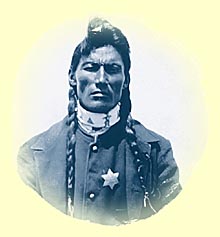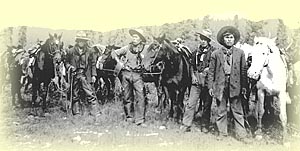|
Adapting to a New Way of Life
By the late nineteenth century, the peoples of the Plains and Plateau had seen their way of life change drastically because of the treaties they had to sign, government policies and the increasing numbers of new settlers. Horses were no longer used for warfare, buffalo hunting and migration. Freedom of movement was restricted, when people were confined to reserves and denied access to land and resources. In response to complaints by white ranchers that wild horses were overrunning valuable grazing lands, governments ordered the slaughter of thousands of horses on the reserves. In doing so, they robbed people of their wealth, and individuals of their political power and status in the community. Government agents and missionaries tried to prevent the observance of rituals and ceremonies associated with the horse. They succeeded to some extent, but certain ceremonies continued to be held in secret. The destruction of horse herds, the prohibition of ceremonies, epidemics and starvation created a sense of hopelessness and despair among Plains and Plateau peoples. Native people managed to adapt and change. They found new ways to apply the horse-training and breeding skills they had developed over the centuries. Some found work as packers, guides, scouts and mounted policemen, while others were employed on the large ranches established by non-Native settlers.
Introduction | Dress Proudly | Horse Imagery | Horse Ritual | Adapting to a new way of life Introduction | Buffalo and Deer | Dog and Coyote | Honouring the Horse SACRED BEINGS | RANCHING | ENTERTAINMENT | RODEO | ARTS AND INDUSTRIES |



